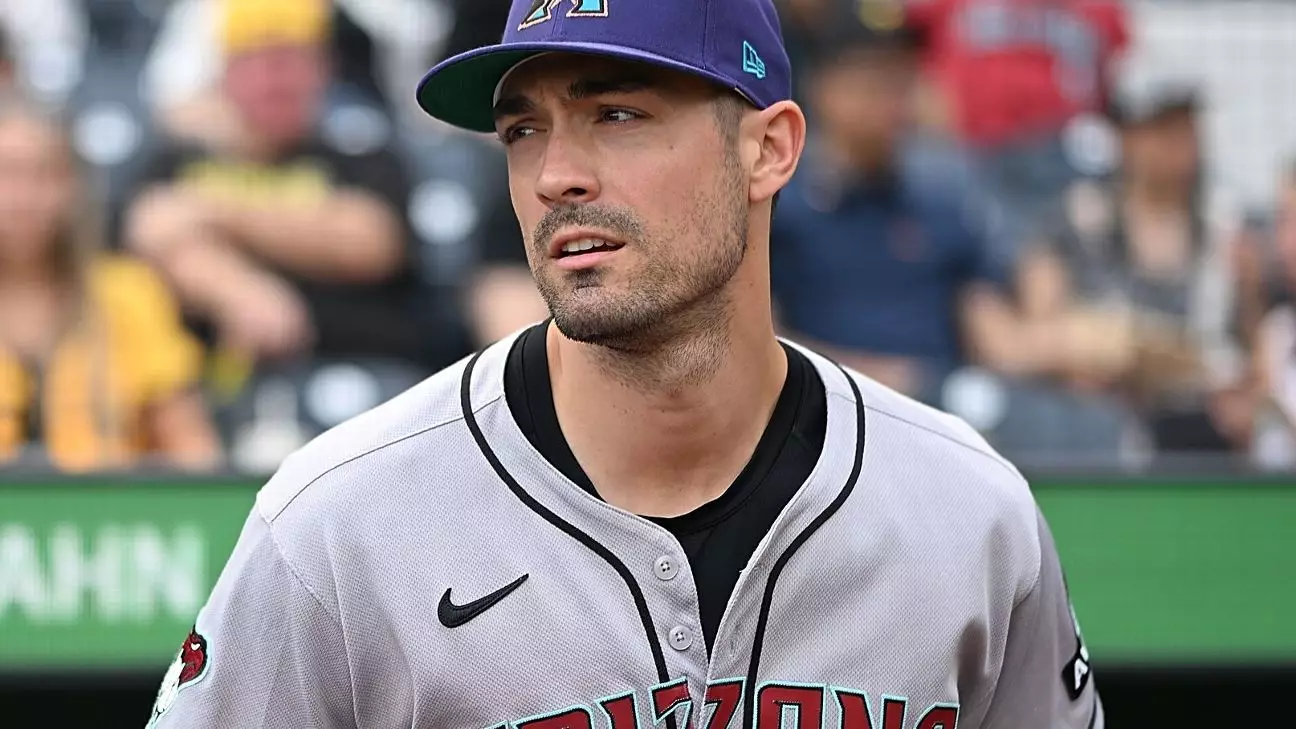The Kansas City Royals’ decision to acquire veteran outfielder Randal Grichuk marks an aggressive effort to bolster their roster amidst ongoing struggles. In a sport where experience can often serve as a stabilizing force, bringing in a player like Grichuk signals a clear intention: to inject some reliability and power into their outfield. At 33, Grichuk may be considered past his prime by some, but his track record suggests that he still possesses the tools to make a tangible difference. His career, punctuated by notable seasons and playoff appearances, indicates that he can bring both veteran savvy and a sense of leadership to a relatively young Royals squad.
However, this move is not without its uncertainties. Grichuk’s recent batting statistics—an average hovering around .243 and modest power numbers—reflect a player who is no longer the explosive hitter of previous years. The Royals are betting on his experience and occasional power surge to complement their roster. If Grichuk can rediscover his offensive rhythm and contribute consistent at-bats, this trade could be a catalyst for the team’s resurgence. Conversely, if he continues to struggle to find his footing, the Royals might have sacrificed valuable roster flexibility and future prospects for a gamble that doesn’t pay off.
Impact on Team Dynamics and Future Strategies
Kansas City’s front office appears committed to making a confident push before the upcoming trade deadline. The acquisition of Grichuk underscores a broader strategic shift—favoring experienced, proven players who can affect immediate results. This approach signals a win-now mentality, likely driven by their desire to climb the standings and make a playoff run. The Royals’ willingness to part with prospects for seasoned talent suggests they value immediate contribution over long-term development.
Moreover, Grichuk’s arrival could serve as a leadership catalyst in the clubhouse. Having played for multiple teams—including high-pressure environments like playoff-contending Blue Jays—he brings a wealth of postseason experience. This intangible asset might prove crucial for a team seeking to spark confidence and resilience among its younger players.
Nevertheless, the move raises questions about long-term strategy. Are the Royals prioritizing short-term gains at the expense of sustainable growth? How much faith can they place in an aging outfielder whose best seasons are somewhat behind him? The answer likely depends on how effectively Grichuk can adapt to his new environment and deliver on expectations. If he finds his form, the Royals could garner significant value from this mid-season shake-up. If not, it might be a misstep that hampers their future planning.
Broader Implications in the MLB Trade Market
This trade also highlights the rapid, competitive nature of this year’s deadline frenzy. Teams like Arizona, struggling to stay afloat, are shedding veteran pieces to clear the way for a rebuild. Their exchange of Grichuk for young pitcher Andrew Hoffmann reflects a focus on future potential over immediate reinforcement. Meanwhile, the Royals’ proactive move indicates their desire to capitalize on current opportunities, even if it involves short-term risk.
In a league increasingly driven by analytics and strategic gambles, such trades reveal a lot about each team’s philosophy. Kansas City’s bold acquisition exemplifies a willingness to invest in seasoned talent, understanding that experienced players can sometimes tip the scales in tight playoff races. As the deadline approaches, these trades will serve as indicators of which teams are daring enough to chase immediate success and which are committed to building foundations for sustained excellence.
This transaction exemplifies the shifting landscape of Major League Baseball, where the line between rebuilding and contending becomes blurred. Whether Grichuk is a revelation or a miscalculated risk, the Royals’ bold move underscores the unpredictable, high-stakes nature of the sport’s mid-season chess game.


Leave a Reply